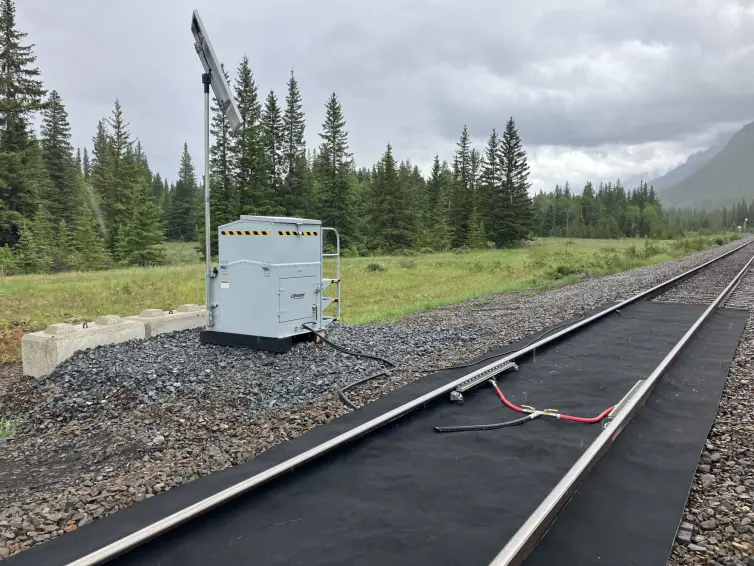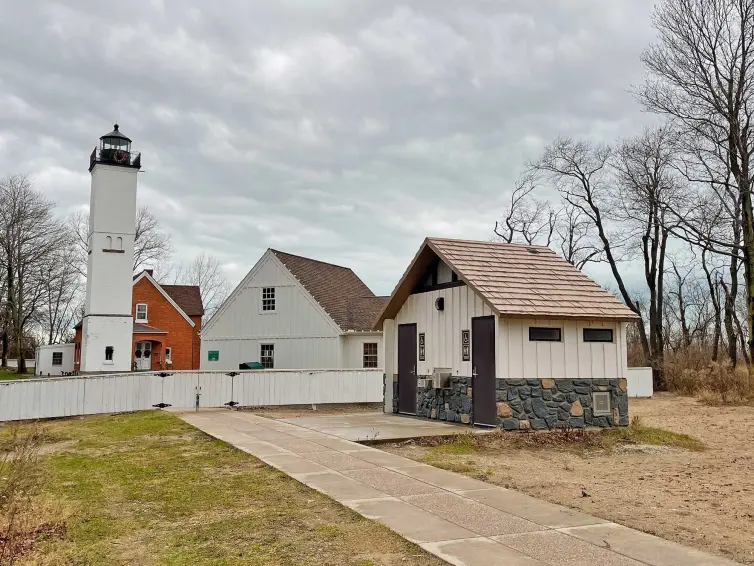Rockfall monitoring with a LIDAR optical fence
- Aug 16, 2018
- Rail
L.B. Foster is tackling in the US with the application of innovative light technologies and remote condition monitoring.
Introduction
Obstacles on the track are a major concern for rail operators in terms of potential risk of accidents, lengthy delays, and cost. Detecting obstacles in remote locations is a challenge that L.B. Foster is tackling in the US with the application of innovative light technologies and remote condition monitoring.
Requirement
In the world of Class One Freight Transport any delay, no matter how small, has a knock-on effect on both the profitability of a specific train load as well as the lateness of subsequent trains. One of the issues trains face is fallen rocks blocking rail lines, and this is especially likely where the train line passes through steep rock cuttings and mountainous areas prone to sizeable objects breaking off the rock face. Conventional means of detecting these events is via physical wire fences; when a rock breaks the wire a signal is sent to the local maintenance engineers who then need to attend site to establish what has happened to the rock. The freight train must run with a restricted speed of 20mph pending this investigation. If a rock or rock-fall has blocked a line, then the delays can be significant. However, L.B. Foster was asked by Class One Freight company BNSF to innovate the use of active Light Detection and Ranging (LIDAR) technology to not only detect that a rock has fallen, but also whether it remains an obstacle on track, how big it is, and wherein the zone susceptible to rockfall it lies.
Requirements
The following list highlights BNSF’s requirements:
A LIDAR fence must be set up along the length of track susceptible to rockfall, with a minimum number of – LIDAR heads providing redundant coverage of adjacent LIDAR’s track
The LIDAR fence must detect a 12-inch diameter or larger object when in the rails or foul of the track.
No alarm made for a train passing
Discrete interfacing for use with existing BNSF detection processors
Fail safe (alarm output for the health of unit)
Detect on both straight and curved track
Distinguish boulders and rocks from landslides
Our solution
L.B. Foster is an established supplier of LIDAR detection systems for Level Crossing applications in Europe. Our Nottingham-based Technology Centre immediately rose to the challenge of evolving our 2-LIDAR Level Crossing Product into a multiple head LIDAR fence that can cater for long stretches of rockfall-susceptible track.
The chosen site for a trial LIDAR fence was on BNSF’s Washington track along the banks of the Columbia River. The area known as Fallbridge possesses 600 feet (185 metres) of fracturing shale rock in near vertical cliffs adjacent to the track.
Solution details
Using 10-off LIDAR heads mounted to the existing break-wire rockfall wire fence, the system is planned for a year long trial to verify the added benefits of LIDAR over the break-wire fence. The fully installed and commissioned system is shown in the following photograph (right). Each LIDAR in the illustration below covers not only its own area of track, but also its neighbouring LIDARs, hence we have dual redundancy in the design to still detect if an obstacle sits on the track even if one LIDAR head fails.
Whilst the train is in transit through the detection area, the LIDAR optical windows are shuttered to prevent detection of the train and also to protect them from dirt and stones flicked up from the passage of the train.
Trains would only ever be subject to restricted speed with this system if there is a stationary obstacle of over 12 inches in dimensional size on the track. The system as it is trialed relies on simple obstacle detection within the area of interest set for each LIDAR head; this area of interest can be changed depending on the track layout, configuration and number of parallel track lines.
The length of the monitored area is not constrained and LIDARs may be installed to monitor sections of track from a few tens of feet to more than a few miles in length. A further benefit of the L.B. Foster Rockfall system is that it is easily expandable to provide both transitory object detection (animals, intruders and other events such as heavy snowfall), and discriminate against an actual obstacle. It will also ultimately capable of direct interfacing to signalling systems via an appropriate SIL safety level approval. L.B. Foster is currently designing level crossing obstacle detectors to SIL3 level in Europe.
Benefits
With the conventional break-wire fence, no knowledge of whether the rock that broke the fence now blocks the track is gained. With the LIDAR system, the precise position and width of the obstructing rock can be fed back to a central control room (subject to data connectivity), or otherwise via a simple relay output to send an alarm signal from a particular head to alert maintenance engineers.
Of course, the size of the object may be determined in either case in the event of multiple LIDAR heads detecting obstructions; detecting landslips or large falls of rock are simply a matter of seeing how many detection zones for the array of LIDAR heads are alarmed at once.
The obvious benefits in knowing that a rock has actually stayed on the track are enormous; no longer does a site engineer automatically have to journey to site, whilst a train is running a restricted speed by having to travel at only 20mph on this leg of its journey. Even if a rock is witnessed by the LIDAR fence to have fallen and impacted through the track, trains may be run at lower speed if the rock is no longer on the track itself, just to ensure no adverse rail damage has been incurred.
In summary the LIDAR system provides a method of actually detecting obstacles on the track itself, and allows a decision of urgency required with which to send an engineer to a sometimes quite remote site. Trains are delayed at signal whilst this happens are delaying both their shipments and those of the following trains, incurring costs along the way. The Rockfall LIDAR system optimises both detection of hazardous obstacles on track as well as the throughput of trains on their journey through rockfall prone territory.





